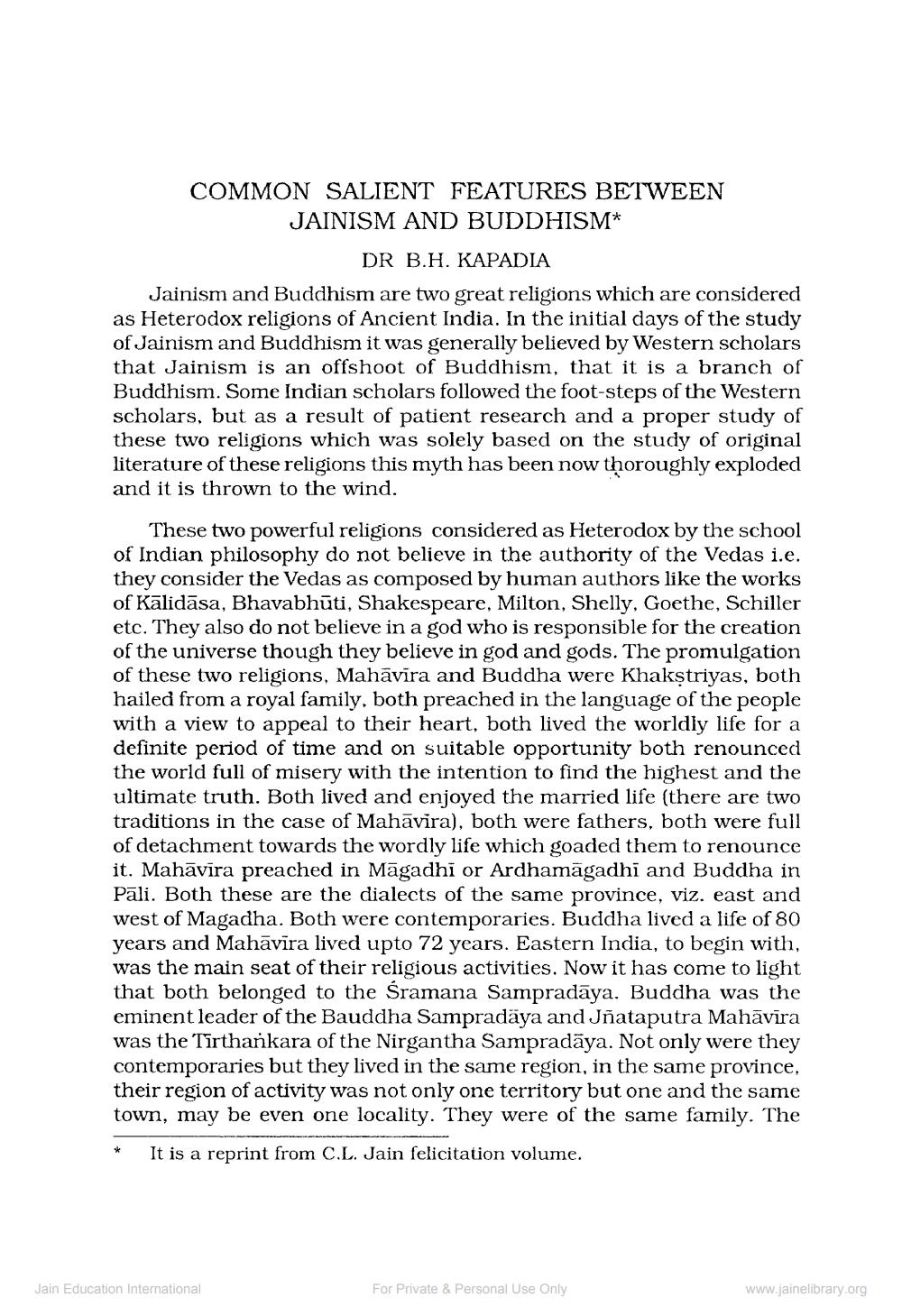________________
COMMON SALIENT FEATURES BETWEEN
JAINISM AND BUDDHISM*
DR B.H. KAPADIA Jainism and Buddhism are two great religions which are considered as Heterodox religions of Ancient India. In the initial days of the study of Jainism and Buddhism it was generally believed by Western scholars that Jainism is an offshoot of Buddhism, that it is a branch of Buddhism. Some Indian scholars followed the foot-steps of the Western scholars, but as a result of patient research and a proper study of these two religions which was solely based on the study of original literature of these religions this myth has been now thoroughly exploded and it is thrown to the wind.
These two powerful religions considered as Heterodox by the school of Indian philosophy do not believe in the authority of the Vedas i.e. they consider the Vedas as composed by human authors like the works of Kālidāsa, Bhavabhūti, Shakespeare, Milton, Shelly, Goethe, Schiller etc. They also do not believe in a god who is responsible for the creation of the universe though they believe in god and gods. The promulgation of these two religions, Mahavira and Buddha were Khakstriyas, both hailed from a royal family. both preached in the language of the people with a view to appeal to their heart, both lived the worldly life for a definite period of time and on suitable opportunity both renounced the world full of misery with the intention to find the highest and the ultimate truth. Both lived and enjoyed the married life (there are two traditions in the case of Mahavira), both were fathers, both were full of detachment towards the wordly life which goaded them to renounce it. Mahāvīra preached in Māgadhi or Ardhamāgadhi and Buddha in Pāli. Both these are the dialects of the same province, viz. east and west of Magadha. Both were contemporaries. Buddha lived a life of 80 years and Mahāvīra lived upto 72 years. Eastern India, to begin with, was the main seat of their religious activities. Now it has come to light that both belonged to the Sramana Sampradaya. Buddha was the eminent leader of the Bauddha Sampradaya and Jñataputra Mahāvīra was the Tīrthankara of the Nirgantha Sampradāya. Not only were they contemporaries but they lived in the same region, in the same province, their region of activity was not only one territory but one and the same town, may be even one locality. They were of the same family. The
*
It is a reprint from C.L. Jain felicitation volume.
Jain Education International
For Private & Personal Use Only
www.jainelibrary.org




